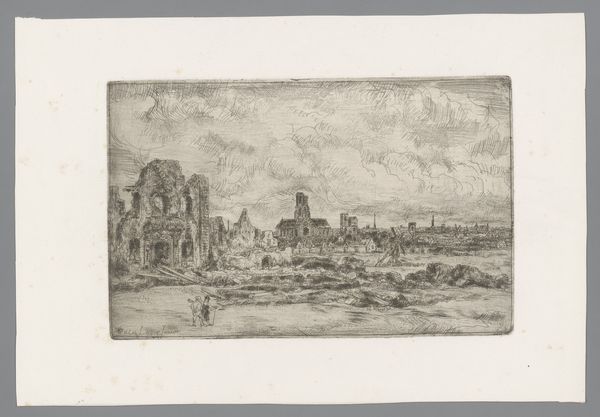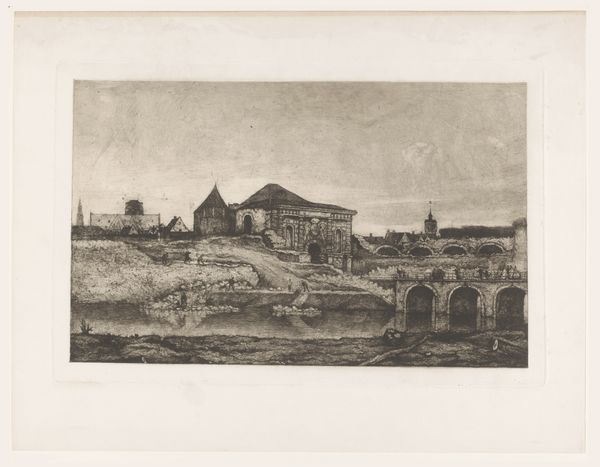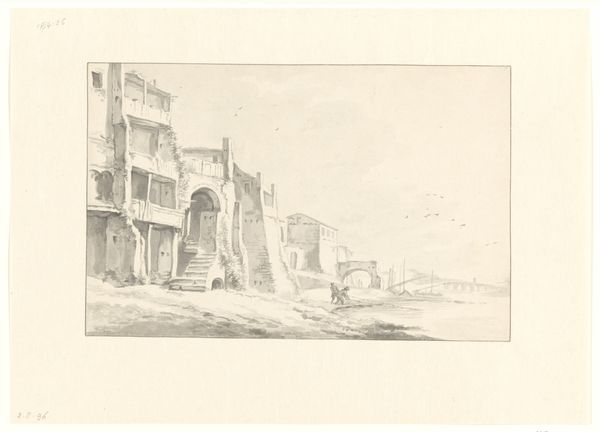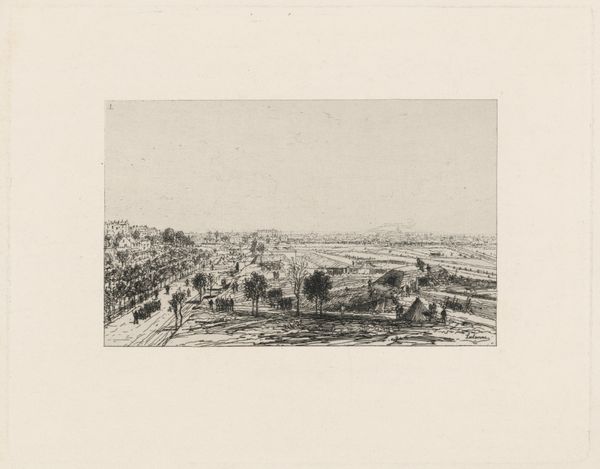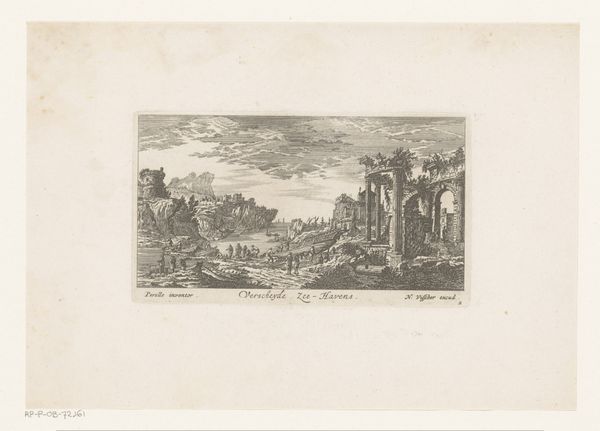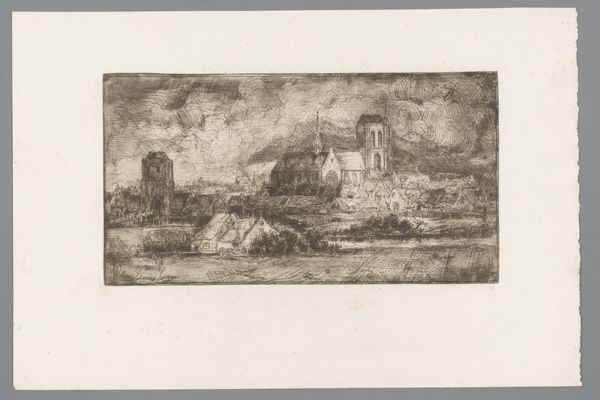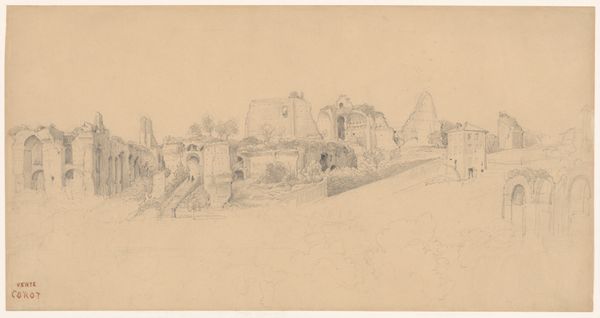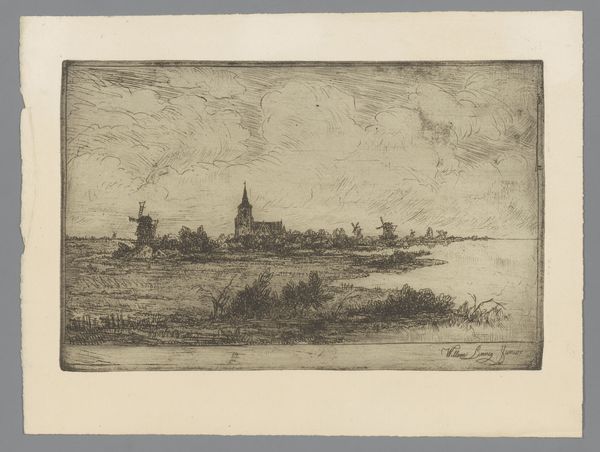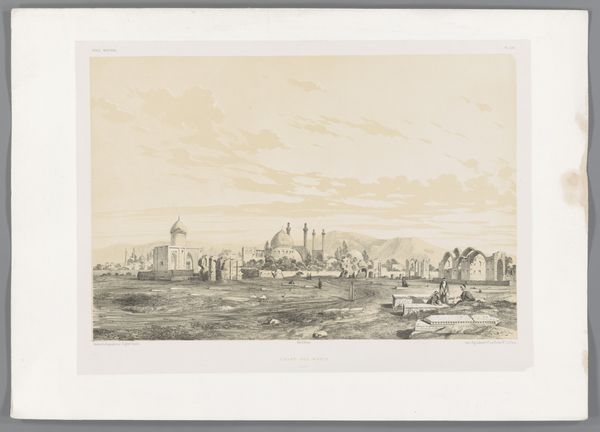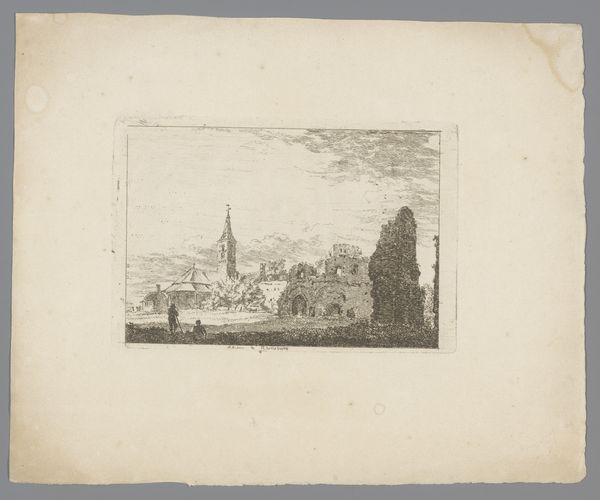
Stadsgezicht met een ruïne en twee figuren op de voorgrond 1852 - 1890
0:00
0:00
willemiilinnig
Rijksmuseum
Dimensions: height 137 mm, width 214 mm
Copyright: Rijks Museum: Open Domain
Editor: This etching by Willem (II) Linnig, titled 'Cityscape with a Ruin and Two Figures in the Foreground,' was created sometime between 1852 and 1890. The scene evokes a feeling of melancholy. What socio-political undercurrents might be influencing such imagery? Curator: It's insightful to observe that melancholic mood, especially given its creation during a period of significant social and political transformation in Europe. Consider how industrialization and urbanization reshaped cities and challenged established power structures. What do you think the ruin symbolizes in that context? Editor: Perhaps the decline of the old order, making way for something new, maybe with some resistance. How were such depictions perceived by the public? Curator: It’s crucial to examine the institutional structures through which such images circulated – art academies, exhibitions, print media. This cityscape offered a powerful visual commentary on the transience of power. But whose power is challenged? Is the power located in that fallen monument on the left, or elsewhere? Editor: Good point! It is tempting to only connect it with traditional power. And now, looking closer at the industrial signs in the background, perhaps this is more about the power of modernization that is causing this ruin. Curator: Precisely. Remember, these artworks don't exist in a vacuum; they are part of a visual culture actively shaping and reflecting societal anxieties and aspirations. Editor: It’s fascinating to consider how art serves as a visual record and a political voice during periods of change. Thank you. Curator: My pleasure. Examining art through this historical and political lens can deeply enrich our understanding.
Comments
No comments
Be the first to comment and join the conversation on the ultimate creative platform.
